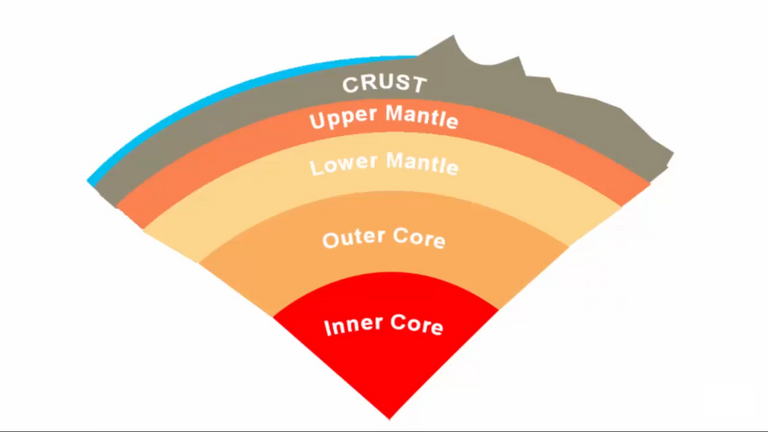STRUCTURE OF THE EARTH
INTERIOR OF THE EARTH can be discussed in THREE LAYERS-
1. CRUST
2. MANTLE &
3. CORE

Crust
It is the outermost solid part of the Earth. It is brittle in nature. Because, during an earthquake, it is the crust that breaks easily. causing a FAULT. The more and more the density of material increases as we go more and more deep. So, materials available in the crust level have low density. The thickness of the crust varies under the Oceanic and the Continental areas.
The mean thickness of OCEANIC CRUST is 5 km.
Whereas the CONTINENTAL CRUST is around 30 km.

Mantle
The second layer is the mantle. Right from the end of the crust and the beginning of outer core it is 2900 km deep and divided into TWO parts-
Upper mantle- it is also called ASTHENOSPHERE and upper mantle and crust together called the LITHOSPHERE. Astheno means weak and due to this weakness the magma finds way to the surface during volcanic eruption. Thickness of the lithosphere is 200 km.

Lower mantle- This layer is also responsible for all of earth's volcanic and seismic activity. Because 2900 km thickness is pretty specious area for the formation of such natural catastrophe. Because, after some laboratory tests it has found that temperature under 100-200 km of earth surface is very high that the rocks are in Molten State.

Core
It is the immediate next layer of the Mantle part of the earth. Density of the materials in this layer is 3500 km. And divided into TWO parts-
OUTER Core- This part is generally in liquid state. The depth is 2300 km and consists of Ni (nickel) and Fe (iron). Because of these two chemical constituents this layer is also known as Nife layer. The highest temperature in this layer is around 4000-5000 degrees Celsius.

INNER Core- This part is generally in solid state. The depth is 1200 km and consists of Fe (iron) mainly. The temperature goes to 5000-7000 degrees Celsius.
THIS PICTURE DESCRIBES THE SUMMARY OF THE WHOLE TOPIC

References
- The Earth's Layer, Oregon State University
- Structure of the earth, Handy Geography
You received a 10.0% upvote since you are not yet a member of geopolis and wrote in the category of "geology".
To read more about us and what we do, click here.
https://steemit.com/geopolis/@geopolis/geopolis-the-community-for-global-sciences-update-4
One or more of your photos is breaking some form of copyright or it is not sourced, whether it be that the photos require proper attribution or are licensed in such a way that they are not free to use. For more information, check out this post here on steemstem copyright standards.
Sincerely,
@kryzsec